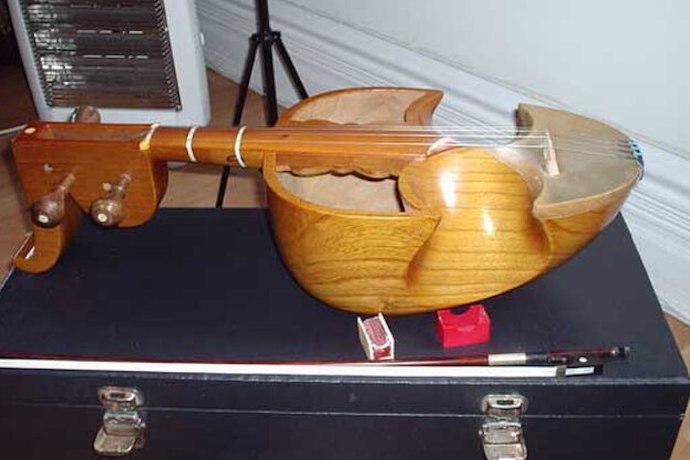By Parisa Pirzadeh
Here is our guide to five Middle Eastern instruments that play a key role in the heritage of the countries and regions where they are played.

Tar
The Tar is a traditional stringed instrument mainly based in the Middle East. Fashioned from wood, it has a long neck and a rich sound that is often used in folk music and various traditional styles. That said, there are different types of Tar including the Persian tar and the Azerbaijani tar, each of which are unique in terms of tuning and positioning.
Santour
Another traditional melodic stringed Middle Eastern instrument, the santour has a trapezoidal shape, a colourful timbre and is played with mallets, producing a vibrant sound. It has 72 strings, which are stretched over a wooden body, and in the Persian music community it is often played in folk traditions.
Ghaychak
Next up in our survey of Middle Eastern instruments is the ghaychak. played in Persian and Afghanistan, the ghaychak has 3 to 4 strings depending on the region it is used and is played with a bow, producing a warm, expressive sound. It is mostly used in orchestras, accompanying singers or other instruments. Known for its emotional depth, it plays a key role in the musical heritage of the regions where it is played.
Ney
A traditional flute-like instrument that is mostly used in Middle Eastern music, the ney has an elegant design
with six holes that are played by blowing across the top, and it is known for its warm, haunting sound. The ney is often used in folk, and Sufi music and holds a significant place in the musical traditions of countries such as Iran, Turkey, and Egypt.
Daf
Lastly in our list of Middle Eastern instruments, the daf is a percussive musical instrument used specifically in Persian music. It has a circular shape with a drumhead made from animal skin or synthetic material, and a resonant sound. Played with the hands, it combines well with other instruments in ensemble, and is commonly used in folk music, Sufi ceremonies, and celebrations.